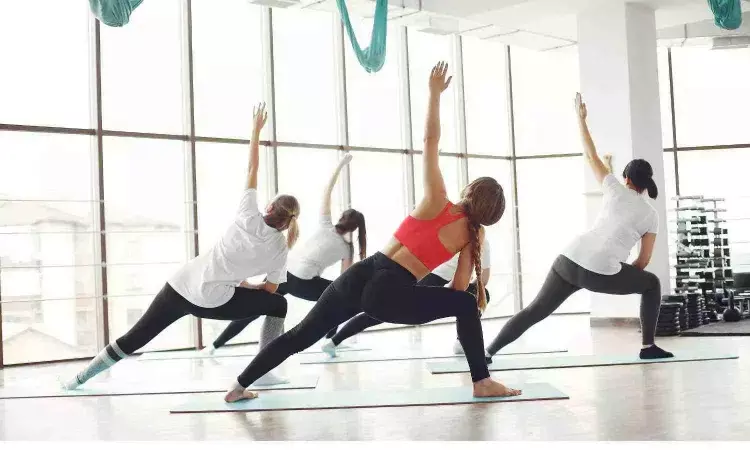- Home
- Medical news & Guidelines
- Anesthesiology
- Cardiology and CTVS
- Critical Care
- Dentistry
- Dermatology
- Diabetes and Endocrinology
- ENT
- Gastroenterology
- Medicine
- Nephrology
- Neurology
- Obstretics-Gynaecology
- Oncology
- Ophthalmology
- Orthopaedics
- Pediatrics-Neonatology
- Psychiatry
- Pulmonology
- Radiology
- Surgery
- Urology
- Laboratory Medicine
- Diet
- Nursing
- Paramedical
- Physiotherapy
- Health news
- Fact Check
- Bone Health Fact Check
- Brain Health Fact Check
- Cancer Related Fact Check
- Child Care Fact Check
- Dental and oral health fact check
- Diabetes and metabolic health fact check
- Diet and Nutrition Fact Check
- Eye and ENT Care Fact Check
- Fitness fact check
- Gut health fact check
- Heart health fact check
- Kidney health fact check
- Medical education fact check
- Men's health fact check
- Respiratory fact check
- Skin and hair care fact check
- Vaccine and Immunization fact check
- Women's health fact check
- AYUSH
- State News
- Andaman and Nicobar Islands
- Andhra Pradesh
- Arunachal Pradesh
- Assam
- Bihar
- Chandigarh
- Chattisgarh
- Dadra and Nagar Haveli
- Daman and Diu
- Delhi
- Goa
- Gujarat
- Haryana
- Himachal Pradesh
- Jammu & Kashmir
- Jharkhand
- Karnataka
- Kerala
- Ladakh
- Lakshadweep
- Madhya Pradesh
- Maharashtra
- Manipur
- Meghalaya
- Mizoram
- Nagaland
- Odisha
- Puducherry
- Punjab
- Rajasthan
- Sikkim
- Tamil Nadu
- Telangana
- Tripura
- Uttar Pradesh
- Uttrakhand
- West Bengal
- Medical Education
- Industry
Long QT syndrome patients can do vigorous exercise without excess risk of cardiac events: Study

A new study by Rachel Lampert and team found that patients with long QT syndrome could engage in strenuous activity without developing an excess of cardiac events. The findings of this study were published in the journal of Circulation. It is uncertain if ventricular arrhythmias are more likely to occur in people with congenital long-QT syndrome (LQTS) who are receiving treatment. Thus, this study was to determine if intense exercise had an effect on the ventricular arrhythmias of people with long QT.
From May 2015 to February 2019, the participants with phenotypic or genotypic LQTS from 37 locations across five countries were prospectively enrolled in the LIVE-LQTS research (Lifestyle and Exercise in Genetic Cardiovascular Conditions), which was supported by the National Institutes of Health. For 3 years, participants (or their parents) responded to questionnaires on clinical occurrences and physical activity every six months. The follow-up was finished in February 2022. Over 60 hours a year at ≥6 metabolic equivalents was considered vigorous exercise. The composite end point of sudden cardiac arrest, sudden death, ventricular arrhythmia treated with an implanted cardioverter defibrillator, and probably arrhythmic syncope was determined by a blinded Clinical Events Committee. For people with insufficient follow-up, vital status was determined by a search of the National Death Index.
Of the 1413 participants, 13% were under the age of 18, 25% were between the ages of 18 and 25, 67% of the study cohort were female. Also, 25% had implanted cardioverter defibrillators, 90% were genotype positive, and 49% had LQT1 where 91% received treatment with beta-blockers, left cardiac sympathetic denervation, or implanted cardioverter defibrillators. 52% of the participants were engaged in vigorous exercise, 50% of which was competitive.
The composite end goal was encountered by 37 people and the total event rates at 3 years were 2.6% in the vigorous group and 2.7% in the non vigorous exercise groups. When comparing the vigorous group to the non vigorous group, the initial hazard ratio for event experience was 0.97 (90% CI, 0.57–1.67), whereas the adjusted hazard ratio was 1.17 (90% CI, 0.67–2.04). In any group or subgroup, neither strenuous nor non vigorous exercise was found to be superior. Overall, the people with phenotypic or genotypic LQTS who were risk assessed and treated at experienced institutions had low rates of LQTS-related cardiac events.
Reference:
Lampert, R., Day, S., Ainsworth, B., Burg, M., Marino, B. S., Salberg, L., Tome Esteban, M. T., Abrams, D. J., Aziz, P. F., Barth, C., Behr, E. R., Bell, C., Berul, C. I., Bos, J. M., Bradley, D., Cannom, D. S., Cannon, B. C., Concannon, M. A., Cerrone, M., … Ackerman, M. J. (2024). Vigorous Exercise in Patients With Congenital Long-QT Syndrome: Results of the Prospective, Observational, Multinational LIVE-LQTS Study. In Circulation. Ovid Technologies (Wolters Kluwer Health). https://doi.org/10.1161/circulationaha.123.067590
Neuroscience Masters graduate
Jacinthlyn Sylvia, a Neuroscience Master's graduate from Chennai has worked extensively in deciphering the neurobiology of cognition and motor control in aging. She also has spread-out exposure to Neurosurgery from her Bachelor’s. She is currently involved in active Neuro-Oncology research. She is an upcoming neuroscientist with a fiery passion for writing. Her news cover at Medical Dialogues feature recent discoveries and updates from the healthcare and biomedical research fields. She can be reached at editorial@medicaldialogues.in
Dr Kamal Kant Kohli-MBBS, DTCD- a chest specialist with more than 30 years of practice and a flair for writing clinical articles, Dr Kamal Kant Kohli joined Medical Dialogues as a Chief Editor of Medical News. Besides writing articles, as an editor, he proofreads and verifies all the medical content published on Medical Dialogues including those coming from journals, studies,medical conferences,guidelines etc. Email: drkohli@medicaldialogues.in. Contact no. 011-43720751


